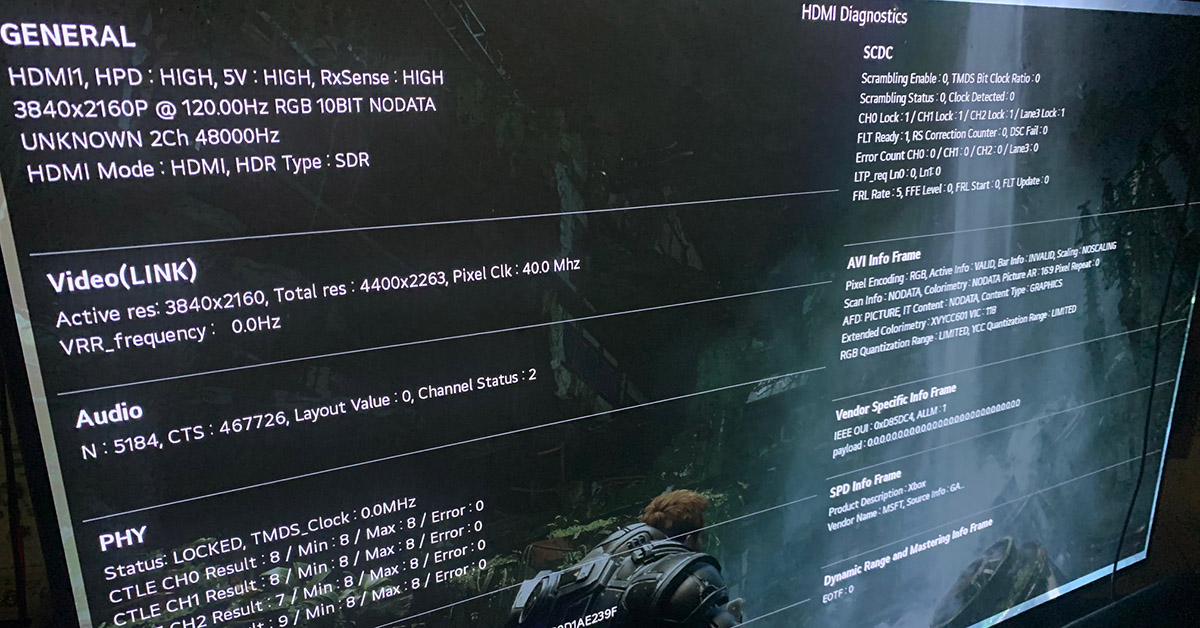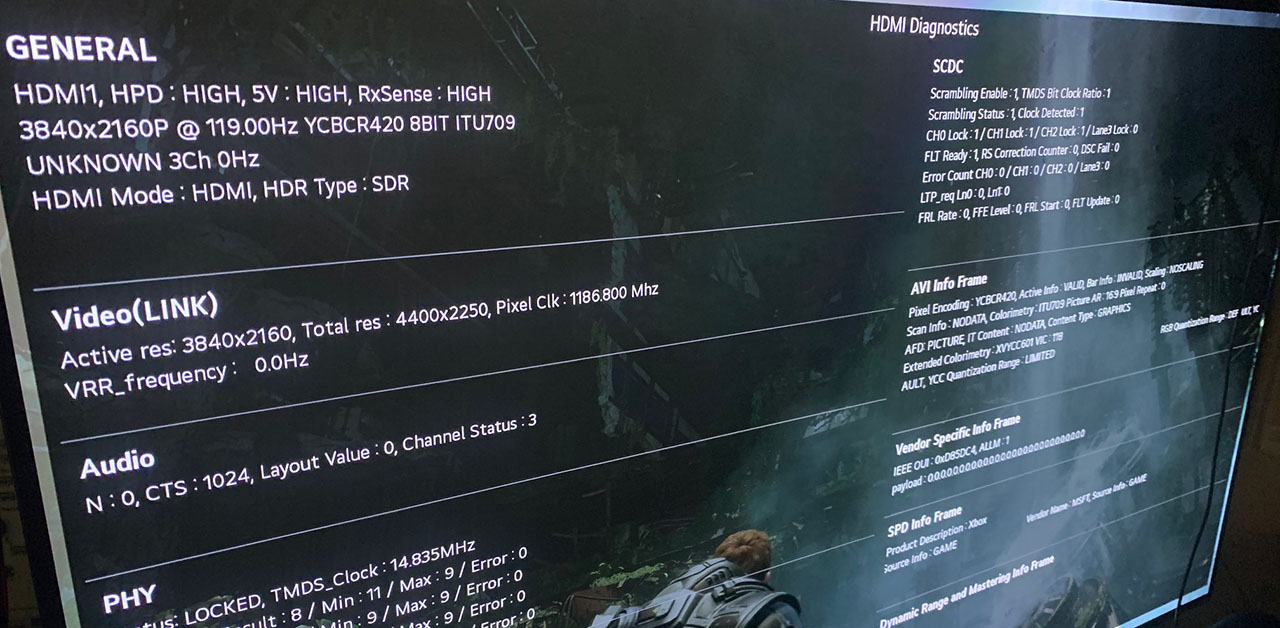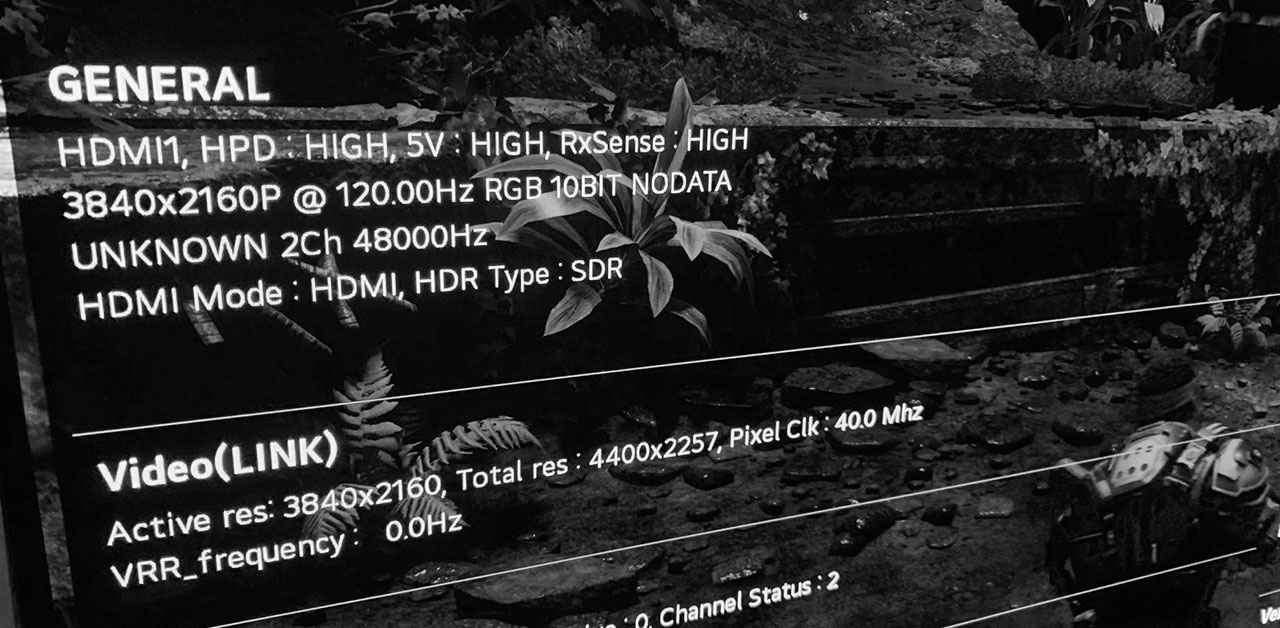General
Be Direct To Your TV.
Happy New Year 2021 from Thenaudio to everybody ! We are excited to start the year and continue innovating and delivering value to your home theaters.
Over the holidays many of you might have gotten your hands on one of the new gaming consoles that were released a couple of months back – namely the new Xbox Series X and the PS5. These are both wonderful powerful engines and are already delivering a superb mix of high-resolution gaming and atmospheric audio experiences.
We wanted to do some experiment on what kinds of resolutions are now available and how they look like. There were some surprises on the way.

In the above picture, you can see the result when Xbox Series X is direct connected to an LG CX HDMI 2.1 TV. The resolution is a fantastic 3840×2160 (4K) running at 120Hz with full 10-bit RGB chroma with deep colors. This is a full 48Giga bandwidth using HDMI 2.1 FRL video mode and is as good as it can possibly get at this stage. The games we tested look incredibly detailed and nuanced. This particular title is even supporting Variable Refresh Rates (VRR) which is one of the new HDMI 2.1 features introduced some time ago and meant to privde with a tear-free game play on supporting displays.
Of course, for audio performance this is far from perfect as you are only listening to the TV internal speakers and this hardly gives you a full realistic atmoshperic experience which is something that is intended to be enjoyed along with playing the game. Audio is a tremendously important part of immersing the gamer to get the full experience.
Traditionally by connecting an AVR in-between the game console and the TV, we can get the full audio experience as well. We wanted to test this using a modern 8K AVR with all the latest bells and whistles that would surely support this experience. We were surprised by the results as shown in the next picture

Interestingly the above is what we get when cables are moved around so that a new modern 8K AVR is placed in between Xbox series X and the LG CX TV in order to get the full audio experience as well. The video format instantly changed. The HDMI 2.1 FRL format got disabled and was replaced by a standard “basic” HDMI 2.0 signal.
Upon closer examination, the video format indeed still reports as 4k120 but the chroma has been changed to 4:2:0 downsampled version. This means that the original 48Giga signal is now only 18giga with roughly one-quarter of the video detail information present anymore. Any potential HDR is lost since 8-bit 420 cannot convey the extra rich “detail”-bits.
In other words, the video performance got sacrificed to a fraction of what it could be using a direct connection in order to be able to enjoy the immersive audio.
It has been widely reported by various outlets already how the current generation of AVRs is not able to process the HDMI 2.1 signaling for 4k120. The automatic workaround seems to be now uncovered. Yes, connecting Xbox Series X the signal format does show 4k120 but the picture quality is tremendously reduced and the HDR (high-dynamic range) content is crippled for the gameplay rendering.
Fortunately, there is a solution to retain the best of both worlds as opposed to accepting a tradeoff between audio and video performance.
Our vision at Thenaudio is to enable and activate existing audio systems to process the best audio formats while connecting the sources directly to the TV to be able to enjoy 48GHz video signals. By utilizing the eARC infrastructure in our processors we are able to capture the full lossless atmospheric audio experience as well as uncompressed lossless 7.1 PCM signals. In the great majority of cases, there is no reason to update or upgrade any of the existing audio equipment.
Introducing our portfolio of Sharc eARC Audio Converter and Zone-2 eARC Audio Processor products. Both products will provide you with the best possible audio performance your system can support.


